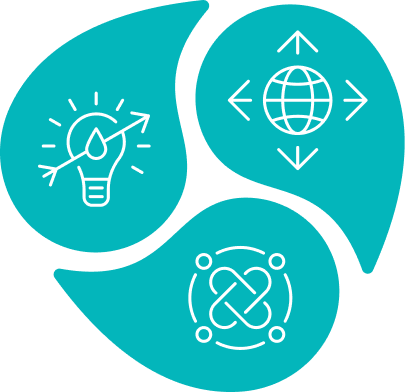The preparation of appropriate or summary documents that present the key facts and results in a simplified and concise manner is crucial for effective participation in the future.
 | IWRM Action Hub |
 Case study
Case study
 | IWRM Action Hub |
 Case study
Case study
Cameroon’s development challenges hinge on the “Cameroon Vision 2035” document which draws inspiration from the 2005 Paris Declaration on Aid Effectiveness. “Cameroon Vision 2035” served as a basis for the elaboration of the Growth and Employment Strategy Paper (GESP) in which the government of Cameroon reaffirmed its commitment towards achieving the Millennium Development Goals (MDGs). The GESP is a second generation of the Poverty Reduction Strategy Paper (PRSP) in which the notion of IWRM is clearly stated. In order to achieve the Millennium Development Goals and implement the recommendations of the World Summit on Sustainable Development (WSSD) held in Johannesburg in 2002, the government of Cameroon, together with five (05) other African countries (Eritrea, Mozambique, Swaziland, Benin and Cape Verde) requested the Global Water Partnership Organisation (GWPO) to submit proposals for better water governance in their respective countries through the Dutch Initiative. The positive response to these proposals led to the creation of phase two of the Partnership for Africa’s Water Development (PAWD-II) which seeks to provide financial assistance to six African countries in preparing their National Integrated Water Resources Management Action Plans (PANGIRE). Cameroon committed itself to the elaboration of its National Integrated Water Resources Management Action Plan by its engagement in the Partnership for Africa’s Water Development (PAWD-II) programme in 2005. The process of preparing Cameroon’s IWRM plan started with the setting up of the Global Water Partnership Cameroon (GWP-Cmr) in June 2005, designed to facilitate the planning process by creating a neutral platform for all water sector stakeholders in Cameroon.
The national IWRM planning process had thirteen steps which can be summarised into four major phases, namely:
The inventory of the water sector, which is part of the second phase of the IWRM planning process, was divided into four thematic areas.
The activities identified for the continuation of the plan are as follows:
During the implementation of the program, much emphasis was given to capitalizing and aligning with existing and ongoing initiatives. GWP-Cmr further ensured that water sector stakeholders were trained on the concept of IWRM so that they could effectively participate in the national IWRM planning process. Special attention was given to the participation of women and youths. Overall, it is estimated that over 311 people from about 126 partner institutions were trained within the context of the PAWD-II programme.
As regards the outcomes of the work done in terms of elaborating a national IWRM plan, three main facts can be mentioned, as follows:
Cameroon is lagging behind in its national IWRM work plan with regard to the timeline defined in the IWRM orientation report adopted by all stakeholders in October 2005. This notwithstanding, efforts are being made to quickly build on the results of the second phase of the planning process (situation analysis) and complete the IWRM Action Plan. The institutional setup and the human capacity to finalise the elaboration of a business plan are available. Thus, it is crucial that the government mobilise the financial resources required to finalise the IWRM Action Plan.
As a result of its capacity building activities and demonstrated technical competence, GWP Cameroon obtained a small grant from UNESCO Cameroon to elaborate the State of the Environment on Fresh Water report for Cameroon. Furthermore, the foundation for the elaboration of an IWRM Strategy and Action Plan has been laid with the strategic options identified. These strategic options still need to be adopted by stakeholders before the IWRM Action plan can be elaborated.
The PAWD-II programme came to an end when the final major phase was still in its infancy due to difficulties which plagued the process like a lack of harmonization on some specifics such as voluntary service within the Project Team, allocation of financial resources by the government, absence of and poor storage of data and information in the country.
The preparation of appropriate or summary documents that present the key facts and results in a simplified and concise manner is crucial for effective participation in the future.
The members of the national IWRM Project Team should be completely detached from the administration and assigned to work full-time on the national IWRM planning process. This would ensure the project is completed on time.
Adopting the principle of “voluntarism” in operational functioning constituted a major handicap to the progress of the PAWD program activities. The voluntary approach to work is realistic when a program is being elaborated, and not during implementation.
Flexibility with time must be considered. Ownership of the national IWRM planning process by the government may require a long time especially where there are frequent changes at the helm of the institution supervising the elaboration of the plan.
Four years are not enough to create a functioning CWP and strengthen its base, facilitate the national IWRM planning process and mobilise resources to guarantee the sustainability of the CWP.
| Source URL: | https://beta.toolbox.venthic.com/case-study/cameroon-partnerships-africas-water-development-planning-iwrm-and-development |